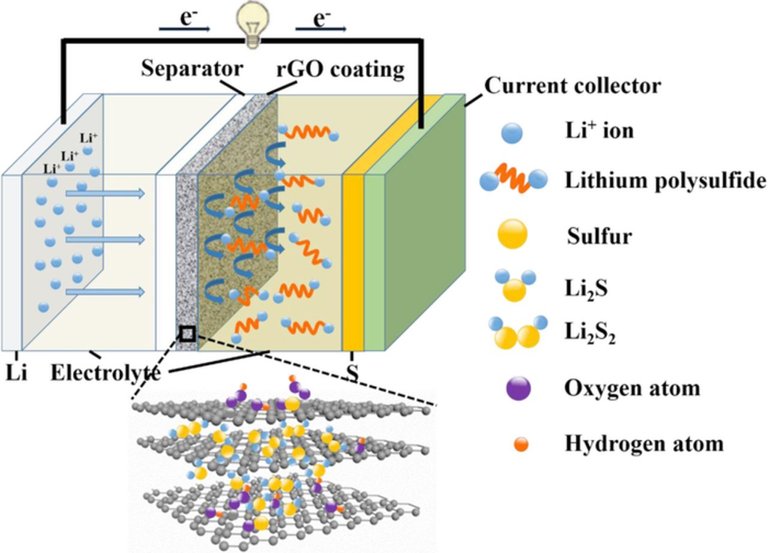The technology
Another battery technology who have a lot of traction in the R&D world is the lithium-sulfur (Li-S). The way it works is similar to a common lithium-ion battery, which uses metal like cobalt or manganese. Where it differs is the lighter atomic weight of sulfur compared to those other metals.

Image source
What does it mean?
Since the battery would be theoretically lighter for the same amount of energy of traditional Li-ion, the specific energy is higher. We are talking about twice as much of energy per kilogram, maybe more. Furthermore, sulfur availability is greater and cost less than metal like cobalt.
Safety
More energy packed in the same place means there's a danger of fire or explosion. That's probably why we don't see Li-S battery on the market still. But, it's probably a question of time.
To date application
The longest flight (11 days) for a high-altitude solar-powered aircraft used Li-S battery. It was a test for a prototype pseudo-satellite from Airbus Defense and Space.
That's all for today, I hope you enjoy reading. If you are looking for more info here are my sources :
Wikipedia
Inside EVs
Thank you
We need more battery tech.
Congratulations @melvin.etniopal! You have completed the following achievement on the Steem blockchain and have been rewarded with new badge(s) :
Click here to view your Board
If you no longer want to receive notifications, reply to this comment with the word
STOPDo not miss the last post from @steemitboard:
Congratulations @melvin.etniopal! You have completed the following achievement on the Steem blockchain and have been rewarded with new badge(s) :
Click here to view your Board
If you no longer want to receive notifications, reply to this comment with the word
STOPTo support your work, I also upvoted your post!
Do not miss the last post from @steemitboard: